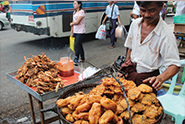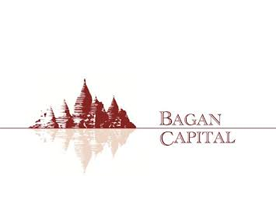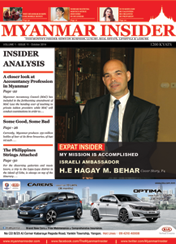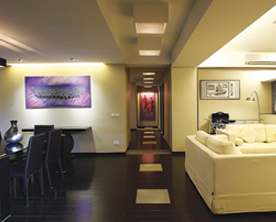Is Food In Yangon Safe and Hygenic?
Myanmar is one of the hottest des- tinations as much for the avid touristss as for people across the
globe wishing to participate in a country’s development, who enthusiastically shift base to this once pariah country. For both, living conditions and access to edible, safe and hygienic food is a major consideration. While drastic transformation is evident in both, in the last three years, I wonder if we can say with certainty that all the food avail- able in Yangon is safe and hygienic.
Food hygiene comes gradually and is seem- ingly linked to the stage of economic devel- opment of a country. This is because access to safe drinking water, provision of neat and clean places for food preparation, education and awareness about the need for hygiene in every aspect of our lives, comes only as countries develop. Of course, pollutants and contaminants also grow over time, but knowledge and awareness being created, is half the battle won.
The Hygiene Concept
Food hygiene can be defined as, “the set of basic principles employed by food operators at all stages of food handling to ensure that food is safe for humans to consume and is of good keeping quality”.
Good food hygiene whichhygiene, which makes food safe to consume, involves re- moval of dirt, germs and contaminants at every stage of food handling, including pro- duction, storage, preparation and presen- tation. The principle idea being to prevent food poisoning and diseases in the digestive tract, ensuring that food does not get spoilt or turn rancid, personal hygiene maintained by food handlers and food related places kept clean and pest free.
Governments play the most important role in establishing rules and regulations, pass laws and acts to be followed by food busi- nesses, and ensure they are implemented and followed stringently, keeping public health in mind. They have to set up systems and standards to ensure that the right pro- cesses are followed to promote food hygiene, and then issue ratings, which give an inkling to consumers whether the food on offer is safe to eat. The entire food chain from the farm to the table, is involved in this. The onus for providing access to providing clean water, proper sanitation and other basic facilities also lies with governments.
The World Health Organization (WHO) has set clear guidelines for proper food handling and its preparation to ensure that it is done with utmost cleanliness, safe raw ingredi- ents are used, the contact between raw and cooked food is avoided, that food is cooked thoroughly to kill all germs, and the pre- pared food is stored at the right temperature to avoid its spoilage.
This is actually a tall order, since it involves extensive training of food handlers in basic food safety, knowing the best practices, and being acutely aware of the risks involved due to even a slight negligence on their part. It is also part of the social responsibility of busi- nesses to protect people from getting sick, promote better health through provision of quality and safe food products, and in the process, protect their business and their reputation.
Thus, a few habits have to become a way of life for every food handler:
- Frequent washing of hands, ideally with warm water and soap, especially after using the toilet, each time they enter the kitchen, change tasks or return after an interruption in a food related activity.
- Any illness like influenza, diarrhea, cold or throat ache, skin eruptions etc. means staying away from food handling, since it leads to the passing on of germs and infection.
- Ensuring cleanliness of the food preparation area, including surfaces and equipment, disinfecting the place, and regularly getting pest control treatment done to keep the place bug and rodent free.
- Utensils, crockery and cutlery must be washed and cleaned with good detergent and hot water, and not wiped, but air dried.
- Cooked foods and perishable items must be stored at appropriate temperatures, since keeping them at room temperature means risking their getting spoiled. All food has to be kept covered and free from dust and flies.
- Uncooked foods, especially meats must to be kept away from cooked items with no chance of them touching prepared foods so as to avoid the transfer of pathogens.
- Personal hygiene of food handlers is imperative. Besides keeping hands clean, nails must be clipped short since germs get stuck in long nails and get passed on into the food. Coughing and sneezing is not permissible, hair must be tied, and covered with a cap, while also not touch- ing or scratching any part of their bodies. Cuts/wounds must be dressed and cov- ered. Besides wearing clean, protective clothing disposable gloves must be worn before touching food. Smoking has to be avoided while handling food.
- The premises where cooking and pro- cessing of food has to be undertaken must necessarily be equipped with prop- er light and ventilation, have appropriate temperature control, keep the place in good repair and absolutely clean, ade- quate sanitation and clean toilets and ensure supply of potable water.
Food Hygiene in Yangon
It is a well known fact that food hygiene in Yangon is rather low, something that even the government admits, while attempting to improve existing standards. Starting from the basics like providing clean drinking wa- ter, and adequate water supply to facilitate washing and cleaning, the concept of hy- giene in the food industry is abysmally low. Hygiene issues persist at every level, from raw ingredients, to cooked foods both do- mestically and commercially. Methods of cleaning, storage, preparation and serving, are all far behind international safety stan- dards in the realm of human consumption. The downtown area is lined with small eat- eries, and most of them do not even appear clean, even though they seem to be doing brisk business. Hot food, freshly prepared, is safe, and since turnover is high, the level of freshness ensures its safety for consump- tion. Avoiding prepared food, lying in the open, often uncovered, is recommended, just as much as uncooked foods.
While many residents may perceive this to be a snobbish perspective, this is reality and stomach disorders are so very common. Locals have been habituated long enough to develop immunity against harmful food bacteria. Bacteria are commonly found in roadside food and transfer easily and quick- ly. Hawkers do not have access to sufficient water to clean utensils and dishes, there is not even enough shelf space to place large pans, which are left on the pavement, ex- posed not just to the elements but numer- ous living beings as well. Unclean hands, recycling disposable plates and spoons, providing a single tumbler for hundreds to drink from, are some of the unhygienic practices witnessed by all of us.
Over three quarters of the cooked food sold in Yangon is from street stalls and mobile vans, which stop and set up shop anywhere and everywhere. Offering an amazing vari- ety of local delicacies, the aroma is tempt- ingly appetizing. Thus one can select the various types of satay, mo hin gar and other soups, salads, fish, vegetables and curries, besides rice and noodles. The dishes are amazingly cheap and a sumptuous meal can be had for as little as 2000 kyats. People frequent these stalls since it is time saving, cheap and tasteful. While many eat on the same tables and chairs provided, an equal number carry packed food home, often in polythene bags unfit for hot foods. The hy- giene issue obviously takes a back seat, and eyes are closed to dishes being just dipped into tubs of dirty water twice over and re- used. Bare hands being used for serving, dirty food counters, the same hands being used for handling both money and food, are some of the dangerous habits noticed about food handlers. Flies and insects buzz disturbingly close to the stored food, dogs and cats are seen close to the large pots of- ten left on the floor. The results came out in the testing of food samples from numerous food stalls. It was found 35% of the food samples of popular preparations like fried rice, sausages and ice cream, contained the dangerous food bacteria like Bacillus cereusv or Staphylococcus aureas, both causing food poisoning. These bacteria get transferred into food due to lack of personal hygiene of food handlers.
The common man and the tourist remain skeptical about how safe the food is, but due to lack of cleaner options at similar price lev- els, remain helpless and optimistically con- tinue buying and eating, hoping that their systems are immune to the bacteria.
Food hygiene being an issue of national concern is conceded even by officials of the Myanmar Restaurants Association (MRA), and the organization has taken it upon itself to educate street vendors about the impor- tance and the process of preparing hygienic food. Taking on one vendor at a time, the MRA is educating them about cleanliness and how to store food, personal hygiene of vendors, the use of proper crockery and keeping food covered and contamination free. It is also persuading the government to ensure adequate water supply for proper washing of equipment. Multinationals like Unilever Food Solutions have been invest- ing both money and effort since 2010, to train staff in Myanmar’s formal hospitality sector about the need and significance of food hygiene.
The flip side of eating unhygienic foods Illness and digestive disorders are a natural corollary to the consumption of unsafe, un- hygienic foods. The extent of contamination 2. determines the symptoms that appear, like diarrhea, throwing up, cramps or nausea, 3. besides various allergies. Dangerous bacte-
ria like E.Coli and Salmonella spread due to 4. poor food handling practices and can cause 5. lasting damage to the victims.
When food is not hygienic, the illness threat looms large, and while most people equip themselves with emergency medicines, it becomes important to be familiar with medical facilities available. Medical insurance
has yet to develop in Myanmar, and most ofus come use international insurance com- panies to provide cover, with the so essential, emergency evacuation option. And sure enough, neighboring countries equipped with the latest healthcare facilities and state-of-the-art hospitals, promote medical tourism in Myanmar to benefit from the missing facilities here, knowing that hospitals and health care has yet to come up to international standards.
High Risk Foods in Yangon
- Street food
- Uncooked vegetables
- Unpeeled and unwashed fruits
- Raw, cold meats
- Unpasteurized dairy products
- Cold sauces, like salad dressings,
- mayonnaise, chutneys
- Ice in drinks
- Tap water
- Fruit juice from open stalls
- Uncovered foods with flies and in-
- sects visible around them.
A Few Don’ts
The biggest problem of eating carelessly es- pecially when in doubt about food hygiene, is the risk of being inflicted with amoebic dysentery. Food poisoning is common, and with lack of quality healthcare facilities, there is a bigger risk involved. It is better to be safe, than sorry.
- Do not drink just any water, ask for bottled water only.
- Do not have any fruit juice extracted in open juicers.
- Do not raw vegetables or unpeeled fruits.
- Do not eat street food.
- Do not eat in small, unclean tea shops and food centers.
- A Few Safe Eateries in Yangon
The best places to eat in Yangon are largely upscale, including all the restaurants in star rated hotels. A few worth mentioning in- clude the following:
Myanmar Cuisine – Padonmar Restaurant, Monsoon, Green Elephant.
Thai Cuisine – Mai Thai, Nacha, Sabai Chinese – White Rice, My Garden, Oriental House
Italian – Sharky’s, La Opera, Parami Pizza, Pepperoni, Napoli
Indian – Corriander Leaf, Titu’s Banana Leaf, A.V.’s
Multicuisine and tea salons – Acacia Tea Salon, Fuji Coffee House, Union Bar & Grill, 50th Street Grill & Bar.
Hygenic food-a precursor to tourism devel- opment
The world today, is virtually without bor- ders, and travel has become a favorite pas- time especially for a generation that believes in working hard and partying hard. Chang- ing mindsets, the spirit of adventure and a nearly hassle free experience of exploring new countries and cultures, has made tour- ism a big industry, and for many countries, the largest revenue earner. Developing countries exude an old world charm that fas- cinates and beckons those willing to spend on travelling. Myanmar, naturally then, stands to benefit immensely from this, and its earnings out of this industry might well fund the infrastructure development des- perately needed in the country. But it has to first provide for the very basic needs of tour- ists, providing them quality accommodation and safe, hygienically prepared food.
















